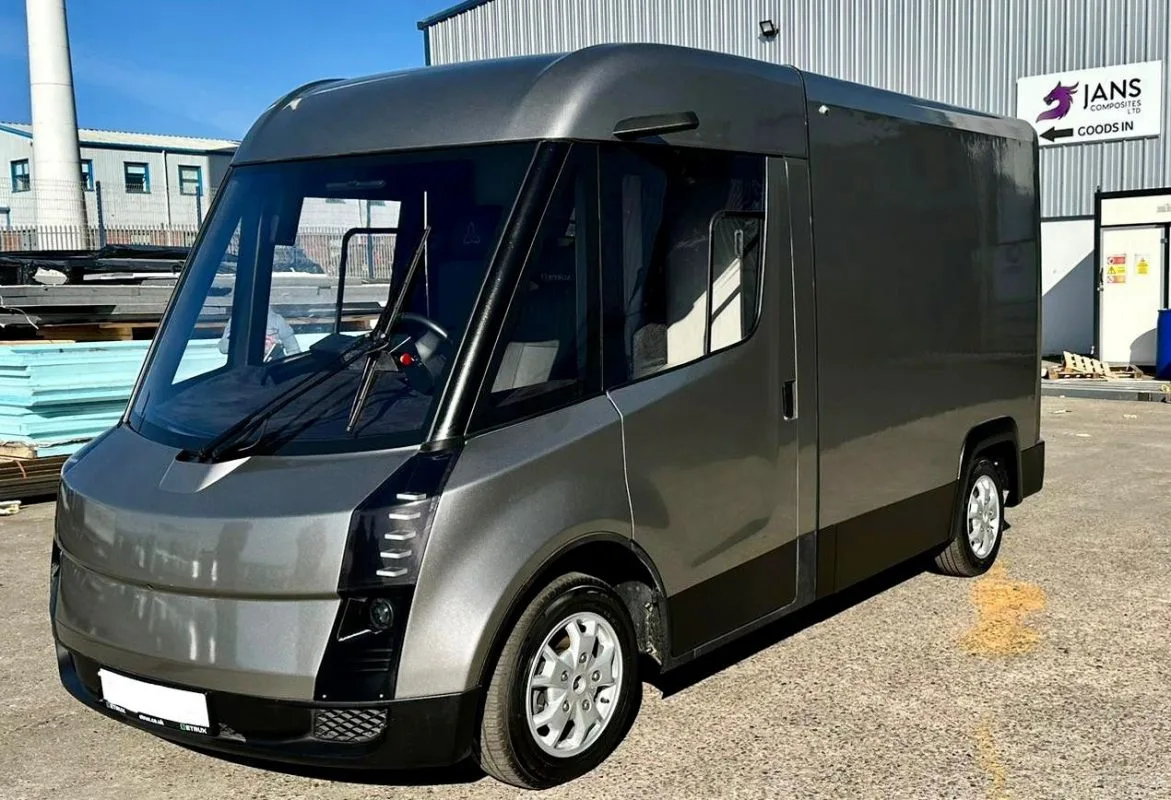Decarbonising logistics
Steve Barbour explores how the logistics sector can accelerate its decarbonisation journey by looking beyond energy savings and alternative fuels towards more innovative materials and advanced manufacturing processes.

THE UK logistics network provides the backbone for countless industries. It underpins the economy and ensures supply chain stability. Every year, it moves around £1 trillion of goods, contributing c.£185 billion in Gross Value Added (GVA)., Driven by e-commerce and the evolving demands of modern industry, the sector is predicted to grow at a Compound Annual Growth Rate (CAGR) of 7.5% between now and 2030.
While this growth is a strong sign for the broader economy, it also represents a significant decarbonisation challenge. After all, around 29% of all UK emissions originate from transport, with 81% of domestic freight moved by road., Overcoming this challenge will undoubtedly require new solutions and innovations.
The story so far
The UK set ambitious decarbonisation targets as part of its ‘Transport Decarbonisation Plan’, which was launched back in 2021. While the roadmap emphasises emissions reduction data across all forms of transport, including road, rail and maritime, it highlights that domestic freight is dominated by road vehicles. To address this, the plan calls for all Light Goods Vehicles (LGVs) to have zero emission capability by 2030 and zero tailpipe emissions from 2035. It also outlines future bans for non-zero-emission Heavy Goods Vehicles (HGVs), staggered by weight class, in 2035 and 2040.
Meeting these targets will prove difficult. While total emissions from cars and taxis have decreased 17.2% between 1990 and 2022, this progress has not been matched by HGVs and LGVs. While HGV emissions have fallen by 10.3%, LGV emissions have actually increased by 61.7%.
For much of the progress made so far, the focus has been on alternative forms of propulsion, avoiding conventional petrol and diesel internal combustion engines (ICE). This primarily means battery electric vehicles (BEVs) and hydrogen fuel cell electric vehicles (FCEVs). In both instances, HGV and LGV fleets are, unfortunately, lagging behind. Currently, BEV vans command just 6.3% of market share, significantly below the government’s 16% target for 2025.
Manufacturing the difference
If alternative propulsion technologies are failing to deliver a meaningful difference, what are the alternatives? Discussions around decarbonisation often focus on the operational emissions of transport, overlooking the emissions generated during manufacturing, material extraction, delivery and disposal. Much like the investment and innovation dedicated to alternative propulsion, there are also numerous opportunities here.
Adopting advanced and efficient manufacturing technologies can play a significant role in UK decarbonisation. At Composite Braiding, our automated manufacturing processes can cut energy use by up to 98%, reduce industrial waste by 97% and lower labour costs by 90% when compared to conventional methods. These make advanced composites significantly more accessible, scalable and suitable for a wide range of transport solutions than ever before. They also enable lightweighting, which provides an effective solution to help OEMs reduce the mass of their vehicles, warehouse carts and other logistics devices.
When it comes to maximising vehicle efficiency, few metrics are more important than weight. With a lower mass, vehicles can travel further and carry a larger payload for the same amount of energy expenditure. In addition to vehicles, lightweighting logistics devices like warehouse carts can significantly decrease the amount of dead weight carried back and forth, ultimately increasing useful payload by a proportional amount.
At the material selection stage, advanced composites are therefore the best way to cut mass without sacrificing strength or stiffness. In fact, Composite Braiding can produce parts with the same strength as steel at just 30% of the comparative weight.
Strategy for greener logistics
If the UK is to achieve its impending emissions targets – particularly when it comes to the logistics sector – it will require a more holistic approach. Making meaningful cuts in the timescales needed requires legislators and the industry to consider novel ways to reduce emissions beyond new propulsion technologies. Fundamentally, investment and innovation should be underpinned by a robust industrial strategy that encourages the adoption of low-carbon manufacturing and the carbon cost of a vehicle’s entire lifecycle – its embedded carbon emissions.
At the same time, the UK must invest in developing complementary infrastructure. If the HGV and LGV fleets are expected to transition to electric and hydrogen power, the UK requires an extensive and accessible ultra-fast-charging network and hydrogen fuel stations. Without these, any attempt to incentivise zero-emission vehicle adoption will prove hugely challenging. This is particularly true for the logistics industry, which requires high uptime, convenient routing and reasonable journey times.
Initiatives such as Innovate UK, the Clean Futures Accelerator and the Freight Innovation Fund have proven crucial, but there is still more that can be done. Decarbonising logistics presents myriad challenges. Successfully addressing them and meeting emissions targets will require both ‘the carrot’ and ‘the stick’.

Steve Barbour, managing director, Composite Braiding
For more information, visit www.compositebraiding.com
In focus: the Chass-e-Cab
The Chass-e-Cab programme, led by Watt Electric Vehicles, saw the design, development and delivery of a 3.5-tonne electric van over the course of just six months. The programme, which benefitted from funding from Innovate UK, utilised lightweight components including A pillars, cant rails and windscreen header beams, produced via Composite Braiding’s low carbon manufacturing process.
The Chass-e-Cab offered a useful payload of 1.5 tonnes – double that of the market leader at the time of the programme. A true milestone in the transition to low-carbon logistics, this project demonstrated the practical advantages of advanced technologies, materials and cross-sector collaboration, and also highlights the benefits of optimising for electric propulsion, rather than retrofitting existing vehicles.
References:
(2) https://neosnetworks.com/resources/blog/uk-logistics-digital-infrastructure-report/
(3) https://www.grandviewresearch.com/horizon/outlook/logistics-market/uk



